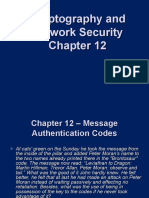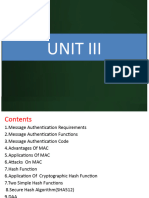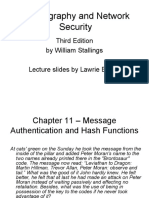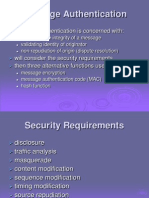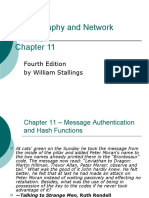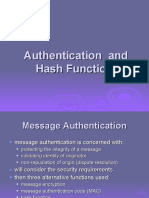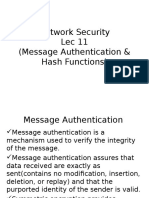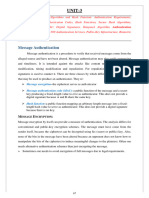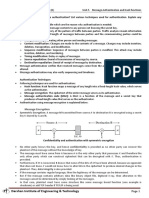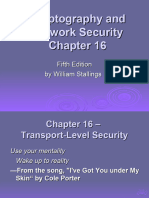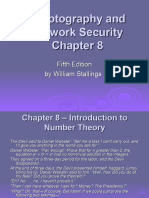0% found this document useful (0 votes)
74 views27 pagesMessage Authentication Codes Guide
This document discusses message authentication requirements and techniques. It covers using encryption for authentication, message authentication codes (MACs), and HMAC which provides authentication using a cryptographic hash function and secret key. HMAC is specified as an Internet standard and proven secure if the underlying hash function is secure against collision attacks.
Uploaded by
mca.2022Copyright
© © All Rights Reserved
We take content rights seriously. If you suspect this is your content, claim it here.
Available Formats
Download as PDF, TXT or read online on Scribd
0% found this document useful (0 votes)
74 views27 pagesMessage Authentication Codes Guide
This document discusses message authentication requirements and techniques. It covers using encryption for authentication, message authentication codes (MACs), and HMAC which provides authentication using a cryptographic hash function and secret key. HMAC is specified as an Internet standard and proven secure if the underlying hash function is secure against collision attacks.
Uploaded by
mca.2022Copyright
© © All Rights Reserved
We take content rights seriously. If you suspect this is your content, claim it here.
Available Formats
Download as PDF, TXT or read online on Scribd
/ 27
